As Ilhan Omar Said, Trump Is a Fascist
The president's rallies prove it.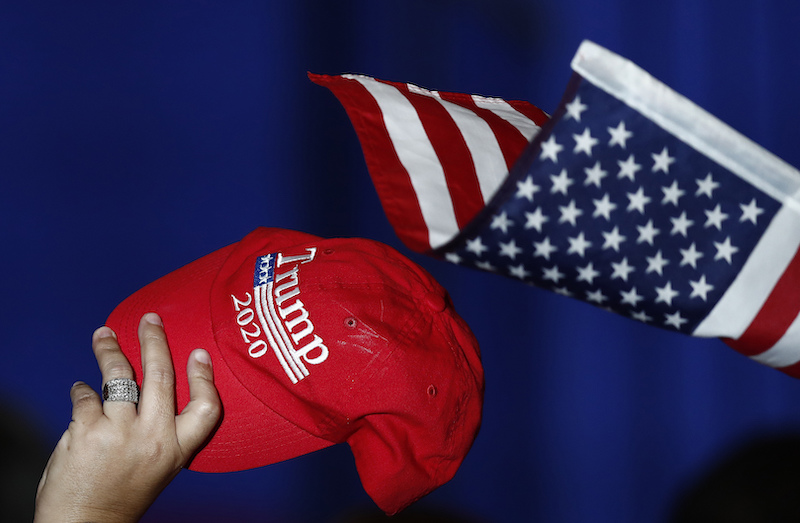 Brynn Anderson / AP
Brynn Anderson / AP
This article was originally published on Truthout.
After Donald Trump accused Congresswoman Ilhan Omar of “trafficking in vicious anti-Semitic screeds” at a rally in North Carolina, the crowd erupted in the chant “Send her back! Send her back! Send her back!” Trump later claimed he did not agree with the chants and that he had tried to cut them short. A tape of the event, however, makes clear that this was a lie. Moreover, Trump refused to retract the racist tweets that set in motion this frenzied mass expression of racism by renewing his call for the four Congresswomen he attacked to leave the country if they do not embrace his worldview of patriotism and American exceptionalism. In fact, he mentioned to reporters that he was “enjoying” the latest controversy over his comments, which have drawn international condemnation.” This was a spectacle that had the markings not only of a current white nationalist rally but also echoes of the hate-filled spectacles that took place in Germany and Italy in the 1930s and 1940s.
It is both strange and disconcerting that almost none of the mainstream reporting on Trump’s rally examined its clear similarities with staged rallies in Nazi Germany and fascist Italy. Much like Nazi rallies, Trump’s rallies seek to turn politics into a grandiose theater of nativism, while presenting the head of state as a kind of demigod. In addition, there is the preaching of hate, which functions as a kind of quasi-religious experience used to trade off and amplify mass anger largely directed at those considered the enemies of the state — in this case women of color who are criminalized by virtue of their political beliefs, race and ethnicity. Seizing upon the potentially violent energy of his followers, Trump transforms their heightened anxieties and collective fears into a mass disdain for Muslims, immigrants, Black people and others.
Trump’s manipulation of the crowds at his rallies brings to mind French reactionary theorist Gustave Le Bon’s depiction of crowds as governed by “impulsiveness, irritability, incapacity to reason, the absence of judgment and of the critical spirit [and] the exaggeration of the sentiments” — a depiction that Hitler read and was inspired by.
Such expressions of hate and racial cleansing are about more than the privileging of fear and emotion over reason. They also constitute an updated version of a mob frenzy that encourages its participants to take pleasure in demonizing others. This “politics of the spectacle” reinforces the social emptiness at the heart of neoliberal societies, filling it with fear, illusion and endless nativist and racist rants while offering the immediate gratification of misdirected pleasure. Trump’s spectacles of fear and racism portray politics as pure theater mediated through the elemental forces of hatred, bigotry and the triumph of power.
In her chapter on “The Drama of Illumination,” in the anthology on Art, Culture, and Media Under the Third Reich, art history scholar Kathleen James-Chakraborty describes how Nazi rallies used public spectacles to unify Nazi supporters around policies that demonized socialists, gays, communists and Jews, all the while drawing attention away from unjust economic and social issues. She writes:
The ingredients of Nazi spectacle may have been familiar, but the degree to which they were now injected into the daily lives of millions of Germans was certainly unprecedented. So was the degree to which they were intended to promise blind obedience to the authoritarian state. Such spectacles could only work if they were comprehensible and thus potentially appealing to the masses upon whose support the ostensible legitimacy of the state depended.
The fascist spectacle echoed a totalitarian logic in which desire became a target of politics. As Simonetta Falasca-Zamponi wrote in Fascist Spectacle: The Aesthetics of Power in Mussolini’s Italy, the relationship between fantasy and agency in these spectacles was reconfigured to produce “the prevalence of the senses over sprit, self-abandonment, and the release of passion.” Culture was transformed into a pedagogical practice of disruption, a pedagogical vehicle used to unleash the collective passions of abhorrence, loathing and cruelty.
The most sinister elements of the fascist spectacle are at work in Trump’s mobilization of a toxic populism. As politics scholar John Keane points out in The Conversation, this is a populism that in the name of an imagined people necessitates “demagogic leadership” and “encourages attacks on independent media, expertise, rule-of-law judiciaries” and other institutions designed to hold power accountable. Trump’s manipulation of his followers feeds upon a right-wing populism that uses the logic of disposability as a driving force of social abandonment and machinery of social death. This populism thrives on the energies of the dead.
Trump’s appropriation of right-wing populism as a tactical weapon is evident in his attack on Rep. Alexandria Ocasio-Cortez of New York, Rep. Ilhan Omar of Minnesota, Rep. Ayanna Pressley of Massachusetts and Rep. Rashida Tlaib of Michigan (collectively known as “the Squad.” Such attacks are part of a spectacle of toxic masculine power that encourages the subordination of women to men, seeks to turn people into dehumanized objects, and transforms intellectual complexities into the quick fix of an emotional discharge. For Trump, shock becomes his mode of address, designed to titillate his adoring fans while using theater as a politics of diversion. Trump’s racism, his demonizing of others and his call to suppress dissent makes the appeal to violence a legitimating tool of state terrorism. At the same time, Trump’s rallies — like the Nuremberg rallies in Nazi Germany — not only appeal to the registers of emotion over reason but also mystify power and embrace dystopian notions of the state in an aesthetic that cinema scholar Lutz Koepnick describes in his essay “Rethinking the Spectacle” as working to “bond the individual to a charismatic project of national rebirth and pure politics.”
Trump’s rallies pathologize politics by promoting a culture of fear that reverses the process of identification from compassion for the other to a feral hatred and contempt. At the same time, Trump’s spectacles while appealing to his base could not succeed without the presence of the conservative media ecosystem and a mainstream press that serves largely to heighten the effects of the Trump media show. Moreover, a number of commentators and almost no Republicans have condemned Trump’s overt racism. In this scenario, there are few moments of profane illumination or self-reflection, except for the way such events are taken up in the alternative media.
We have arrived at a historical moment when the interface of violence, fear, racism and new technologies are strengthening and mobilizing a political formation steeped in a species of white nationalism. This formation turns fear and the pleasure of humiliation into the immediacy of a spectacle that delivers the fantasy of collective revenge as a central part of presidential power and electioneering. Let’s be clear. At the heart of Trump’s rallies is a manufactured pageant that trades in violence, cruelty, humiliation and domination as part of his campaign of terror that makes the elemental structures of a democracy and the social sphere dysfunctional. Trump’s spectacle operates off of fear rather than persuasion and, in doing so, reinforces the ominous anti-intellectual forces that drive his presidency.
Trump unapologetically operates on the assumption that only white people can be citizens — a belief that Ishaan Tharoor argues is a cornerstone of white nationalism. By politicizing racial taunts and reinforcing the assumption that citizenship is the exclusive terrain of whites, Trump turns politics into part of a war culture that trades in divisiveness and friend/enemy divides. What is clear is that Trump’s rallies echo a fascist past that uses racism and nativist narratives of racial purity as a form of mass entertainment. Trump’s rallies thus make clear that politics has degenerated into a war on justice and any vestige of democracy. Moreover, Trump has given further legitimation to what has become a global phenomenon of right-wing populism, which as Agnes Heller has written, is “the transformation of class to a mass society.” That is, class is no longer defined in terms of inequalities in wealth, power and resources, but as a generalized mass no longer defined by the boundaries of popular sovereignty and an insurgent collective resistance but by the need to transfer power to a leader who speaks and acts on behalf of the multitude.
What we are witnessing at the current historical moment is an acceleration of racial politics and the politics of terminal exclusion, wrapped up in the mass marketing of rage and anger. Language has degenerated into an educational and political project for reinforcing the currency of white supremacy through what Paul Gilroy describes in Against Race as the affective registers of “romance, pleasure, and fantasy.” In Trump’s rallies, we find a spectacle rich with the thrill of what economist Calvin Hoover in 1933 called “a sugar-coated terror,” carefully staged in the service of an emotionally charged rhetoric that affirmed a culture of cruelty. In this aestheticization of politics is a fascist principle wedded to producing what Étienne Balibar calls “death zones of humanity.” These “death zones” (where people become silenced, unknowable, and lack human rights) take the form of borders, detention centers and dead spaces of terminal exclusion — wrapped up in spectacles and political pageants that call for the elimination of those individuals and groups seen as a threat to the ideology of white nationalism.
Trump has a predatory instinct for mobilizing hatred and whipping up a regressive release of mass emotions in which a narrow Nazi-style “blood and soil” ethos replaces humanitarian ways of being. This is a discourse that puts the meaning of justice, identity and citizenship on trial and could lead eventually to the imprisoning and killing of those deemed enemies of the people.
Trump’s presidency reinforces an unchecked racism and nativism through conservative and mainstream cultural apparatuses and pedagogical practices that further normalize a right-wing populism and enhance the global standing of authoritarianism. The public sphere is now saturated with spectacles of violence, thoughtlessness and a mind-numbing anti-intellectualism. At work here is an ongoing project to transform culture into a theatrical performance, while quickening, without apology, a fascist politics that has now become a central element of governance.
Rather than kill democracy through a military coup or a show of state force, Trump eviscerates democracy through a cultural politics that hollows out and destroys those institutions that produce critically engaged citizens. This is a soft form of fascism, rooted in modes of identification, desire and agency that offer the public unity defined through what Los Angeles Review of Books contributor Anya Ventura describes as “a separatist politics that relied on strict categories of identity.” Or more specifically, a separatist politics rooted in the divisive lens of white supremacy and the hatred of democracy.
At stake here is not just a political crisis but also a cultural crisis resulting in what architect and theorist Teddy Cruz describes in Living as Form as “the inability of institutions to question their ways of thinking … the rigidity of their protocols and silos.” Trump’s aestheticization of politics aims largely to eliminate those formative cultures that create the habits and dispositions upon which a democracy’s survival depends.
In this media-fabricated ecosystem, agency can only find its purpose and meaning in the coordinates of hate and anti-immigrant rhetoric and policies. Under Trump, reality has become a toxic melodrama played out through a relentless display of hypermasculinity, ultranationalism and a culture of utter cruelty that accelerates the death of the unwanted.
White nationalism is now being delivered nationally via emotional taunts parading as spectacle, entertainment and manufactured drama. The making of politics as theater opens up a new connection between contemporary fascist politics and a fascist past. Ilhan Omar was right in calling Trump a fascist.
Your support matters…Independent journalism is under threat and overshadowed by heavily funded mainstream media.
You can help level the playing field. Become a member.
Your tax-deductible contribution keeps us digging beneath the headlines to give you thought-provoking, investigative reporting and analysis that unearths what's really happening- without compromise.
Give today to support our courageous, independent journalists.
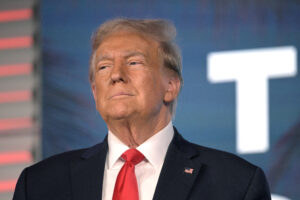
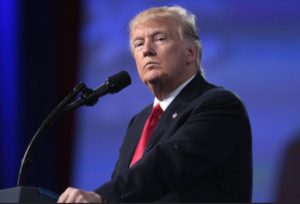
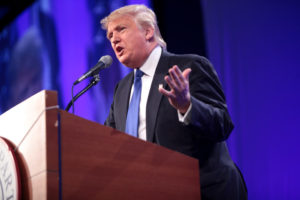

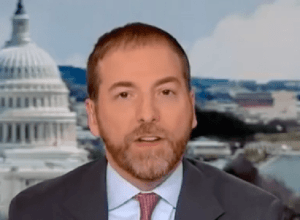
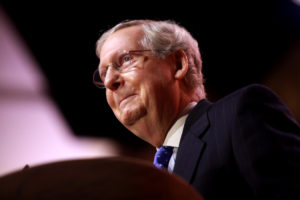
You need to be a supporter to comment.
There are currently no responses to this article.
Be the first to respond.